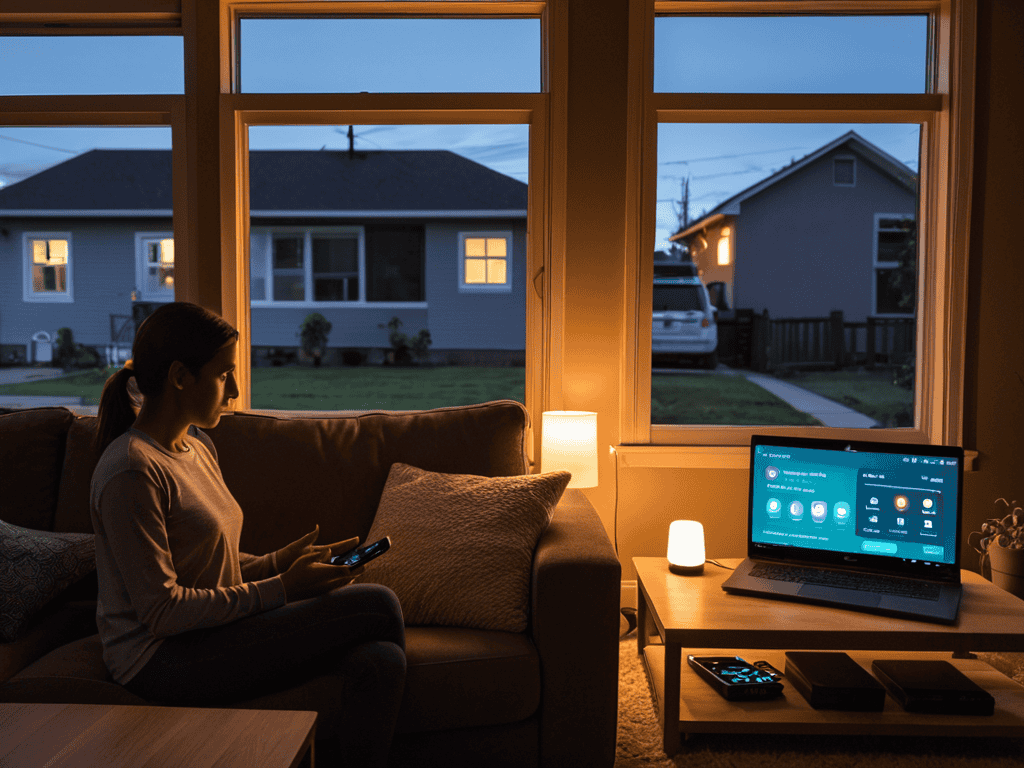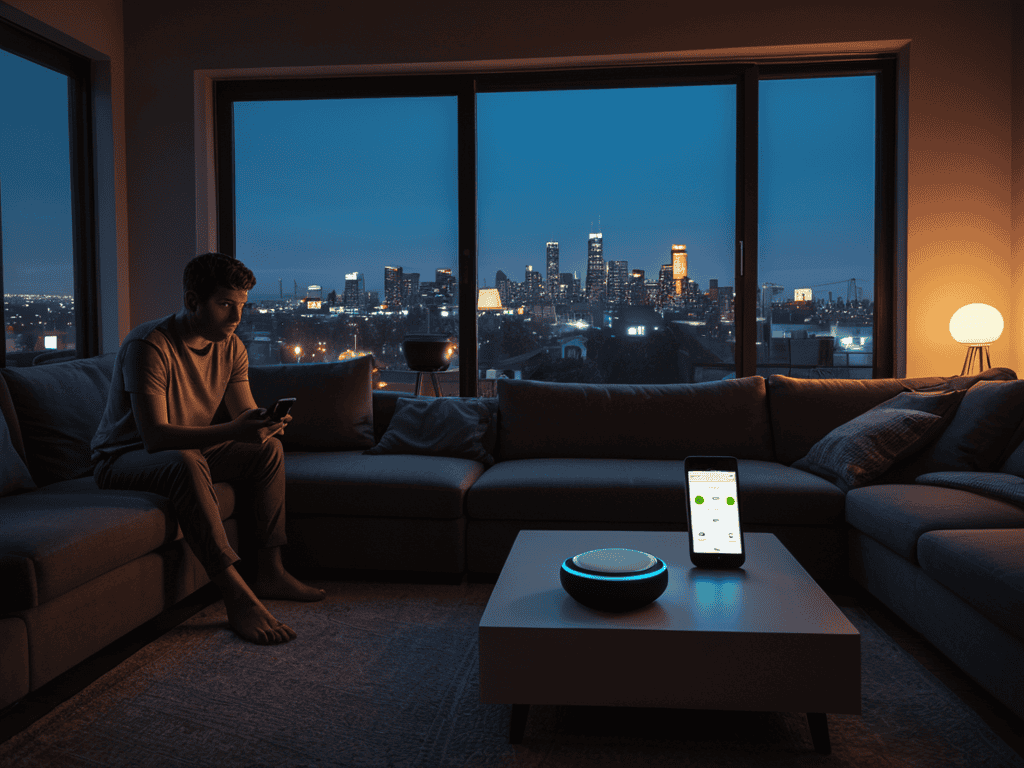As I’ve traveled from one smart home to another, I’ve started to wonder – are our clever gadgets secretly leaving us vulnerable to some pretty scary security risks? I mean, think about it: we’re basically inviting a multitude of devices into our personal spaces, often without fully understanding their potential impact on our privacy and safety. The question on everyone’s mind is: what are the security risks of your smart home devices? It’s a topic that’s often shrouded in technical jargon and fear-mongering, but as someone who’s passionate about elevating your travel experience and exploring the intersection of technology and culture, I want to cut through the noise and give you a straightforward, no-nonsense look at the real risks involved.
In this article, I promise to provide you with honest, experience-based advice on how to navigate the complex world of smart home devices and minimize their potential security risks. I’ll draw on my background in Cultural Anthropology and my experiences as a traveler to offer a unique perspective on the ways in which technology is reshaping our relationships with our homes and our communities. My goal is to empower you with the knowledge you need to make informed decisions about your smart home devices, without resorting to overcomplicated solutions or expensive gimmicks. By the end of this article, you’ll have a clearer understanding of the real security risks associated with smart home devices and some practical tips for protecting yourself and your loved ones.
Table of Contents
What Are the Security Risks

As I delve into the world of smart homes, I’ve begun to realize that our iot device vulnerabilities can be a significant concern. It’s not just about the devices themselves, but how they interact with each other and our home network. I recall a friend’s experience where their smart thermostat was compromised, allowing hackers to gain access to their entire network. This incident highlighted the importance of smart home network encryption and secure communication between devices.
When it comes to device authentication, I’ve found that many smart home devices lack robust device authentication protocols. This can make it relatively easy for unauthorized individuals to gain access to our homes. I’ve started to look into secure smart home hub options that can help mitigate these risks. By choosing a hub with robust security features, we can better protect our devices and prevent potential breaches.
To further safeguard our smart homes, it’s essential to practice good smart device password management. This includes using unique and complex passwords for each device, as well as regularly updating software and firmware. By taking these precautions, we can reduce the risk of protecting against smart home hacking and ensure a safer, more secure living environment.
Iot Device Vulnerabilities Uncovered
As I delve into the world of smart homes, I’ve discovered that IoT device vulnerabilities are a pressing concern. Many of these devices are manufactured with convenience in mind, often at the expense of security. This can lead to a plethora of problems, from data breaches to unauthorized access.
As I delve deeper into the world of smart home security, I’ve come to realize that staying informed is key to protecting our personal sanctuaries. In my quest for knowledge, I stumbled upon a fascinating platform that offers a wealth of information on the latest trends and best practices in smart home security – a visit to travestichat can be a great starting point for those looking to boost their security savvy. By exploring such resources, we can gain a better understanding of the potential risks and take proactive steps to safeguard our homes, ultimately creating a more secure and peaceful living environment.
In my exploration of smart home security, I’ve found that outdated firmware is a common culprit behind IoT device vulnerabilities. When devices are not regularly updated, they can become easy targets for hackers, allowing them to exploit weaknesses and gain control of the device.
Protecting Against Smart Home Hacking
As I delve into the world of smart home security, I’ve come to realize that protecting our personal space is more crucial than ever. With the rise of IoT devices, it’s essential to be aware of the potential risks and take necessary precautions to safeguard our homes.
To mitigate these risks, it’s vital to implement strong password management and keep our devices updated with the latest security patches. By taking these simple yet effective measures, we can significantly reduce the likelihood of our smart home devices being compromised by hackers.
Safeguarding Your Smart Sanctuary

As I delved deeper into the world of smart home devices, I realized that safeguarding your smart sanctuary is not just about protecting against external threats, but also about ensuring the integrity of your internal network. This is where smart home network encryption comes into play, providing a robust layer of security that prevents unauthorized access to your devices. By encrypting the data transmitted between your devices, you can significantly reduce the risk of sensitive information being intercepted or compromised.
To further bolster your defenses, it’s essential to implement device authentication protocols that verify the identity of each device on your network. This can be achieved through secure smart home hub options that offer advanced authentication mechanisms, such as biometric scanning or two-factor authentication. By adding this extra layer of security, you can prevent unauthorized devices from joining your network and compromising your smart home ecosystem.
In my travels, I’ve seen many homeowners overlook the importance of smart device password management. It’s crucial to use unique, complex passwords for each device and to regularly update them to prevent potential breaches. By adopting these simple yet effective security measures, you can significantly enhance the security of your smart home and protect against smart home hacking.
Secure Device Authentication Protocols
As I delve into the world of smart home security, I’ve come to realize the importance of robust authentication protocols. These protocols serve as the first line of defense against potential hackers, ensuring that only authorized devices can access and control your smart home ecosystem. By implementing secure authentication measures, you can significantly reduce the risk of unauthorized access and protect your personal data.
To achieve this, many smart home devices now incorporate multi-factor authentication methods, which require a combination of passwords, biometric data, and other forms of verification to grant access. This added layer of security makes it much more difficult for hackers to gain unauthorized entry, providing you with peace of mind and a safer smart home experience.
Smart Home Network Encryption Essentials
As I delve into the world of smart home security, I’ve come to realize the importance of securing the network that connects all our devices. It’s not just about having a strong password, but also about ensuring that the data transmitted between devices is encrypted and protected from prying eyes.
To achieve this, encryption protocols must be in place, safeguarding our personal information and preventing unauthorized access to our smart home systems. By implementing these measures, we can significantly reduce the risk of our smart homes being compromised, and enjoy the convenience and comfort they provide with greater peace of mind.
Navigating the Unseen: 5 Essential Tips to Mitigate Smart Home Security Risks
- Implement Regular Firmware Updates: Stay ahead of potential vulnerabilities by ensuring your devices are running on the latest software, patched against known security threats
- Use Strong, Unique Passwords: Protect each of your smart devices with robust, one-of-a-kind passwords to prevent unauthorized access and minimize the risk of a breach
- Segment Your Smart Home Network: Isolate your smart devices on a separate network to prevent a single compromised device from becoming a gateway to your entire digital life
- Enable Two-Factor Authentication (2FA): Add an extra layer of security by requiring a second form of verification, making it significantly harder for hackers to gain access to your smart home system
- Monitor Your Network Activity: Keep a vigilant eye on your network traffic, watching for any suspicious activity that could indicate a security breach or a compromised device
Elevating Smart Home Security: 3 Key Takeaways
Implementing robust network encryption and secure device authentication protocols is crucial to protect your smart home from potential hacking threats
Regularly updating and patching your IoT devices can significantly reduce the risk of vulnerabilities being exploited by malicious actors
By adopting a proactive approach to smart home security, including practices such as secure password management and monitoring for suspicious activity, you can help safeguard your personal sanctuary from cyber threats
A Word of Caution
As we invite smart devices into our homes, we must remember that each connection is a doorway, not just to convenience, but potentially to vulnerability – it’s our responsibility to ensure these doorways are guarded with the same vigilance we afford our front doors.
James Howes
Embracing a Safer, Smarter Tomorrow

As I conclude my journey through the potential security risks of smart home devices, I want to emphasize the importance of being aware of these vulnerabilities. From IoT device weaknesses to the need for smart home network encryption, it’s clear that our quest for convenience must be balanced with a commitment to security. By understanding the risks and taking steps to mitigate them, such as implementing secure device authentication protocols, we can enjoy the benefits of smart home technology while safeguarding our personal sanctuaries.
As we look to the future, it’s essential to remember that security is a shared responsibility. By staying informed, taking proactive measures, and prioritizing our digital safety, we can create a safer, smarter world for everyone. So, let’s embark on this journey together, with curiosity and caution, and unlock the full potential of smart home technology while protecting what matters most – our homes, our families, and our sense of security.
Frequently Asked Questions
What are the most common vulnerabilities found in IoT devices that can put my smart home at risk?
As I’ve delved into the world of smart homes, I’ve discovered that common IoT device vulnerabilities include weak passwords, outdated software, and unsecured communication protocols – all of which can leave your home exposed to potential hackers, much like an unlocked door inviting strangers into your sanctuary.
How can I ensure that my smart home devices are protected against hacking and unauthorized access?
To safeguard your smart home, I recommend implementing robust passwords, keeping firmware up-to-date, and utilizing two-factor authentication – it’s like adding an extra lock to your digital front door, giving you peace of mind as you explore the world, both physically and digitally.
Are there any specific smart home devices that are more prone to security risks than others, and how can I safeguard them?
As I’ve delved into the world of smart homes, I’ve found that devices like cameras, doorbells, and voice assistants are particularly vulnerable. To safeguard them, I recommend regularly updating their software, using strong passwords, and enabling two-factor authentication – it’s like adding an extra lock to your digital front door.



